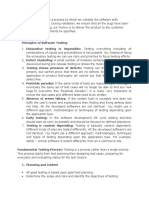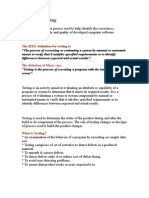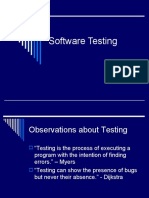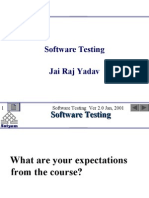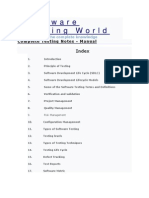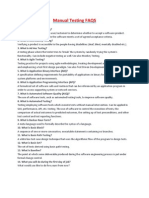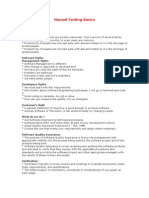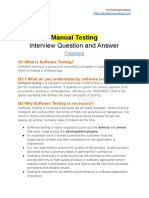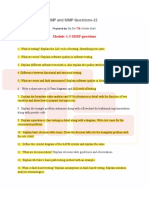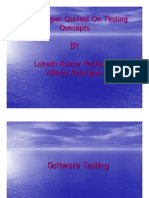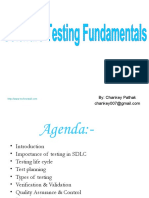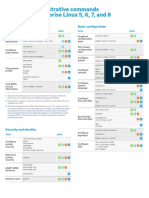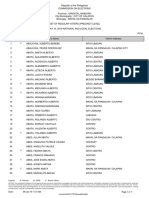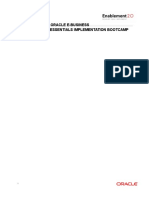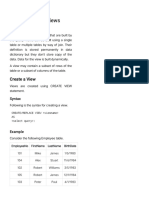100% found this document useful (2 votes)
2K views93 pagesSoftware Testing Fundamentals
This document provides an overview of software testing fundamentals. It defines software testing as executing a program to find defects by checking if the actual behavior matches the expected behavior. The document discusses the importance of testing and describes different approaches to testing like the big bang approach and TQM approach. It also covers testing principles, objectives, and the role of testing at different stages of the software development life cycle.
Uploaded by
KEERTHIKA P. keerthika.cseCopyright
© © All Rights Reserved
We take content rights seriously. If you suspect this is your content, claim it here.
100% found this document useful (2 votes)
2K views93 pagesSoftware Testing Fundamentals
This document provides an overview of software testing fundamentals. It defines software testing as executing a program to find defects by checking if the actual behavior matches the expected behavior. The document discusses the importance of testing and describes different approaches to testing like the big bang approach and TQM approach. It also covers testing principles, objectives, and the role of testing at different stages of the software development life cycle.
Uploaded by
KEERTHIKA P. keerthika.cseCopyright
© © All Rights Reserved
We take content rights seriously. If you suspect this is your content, claim it here.
/ 93

